2018-07-12 - Nº 167
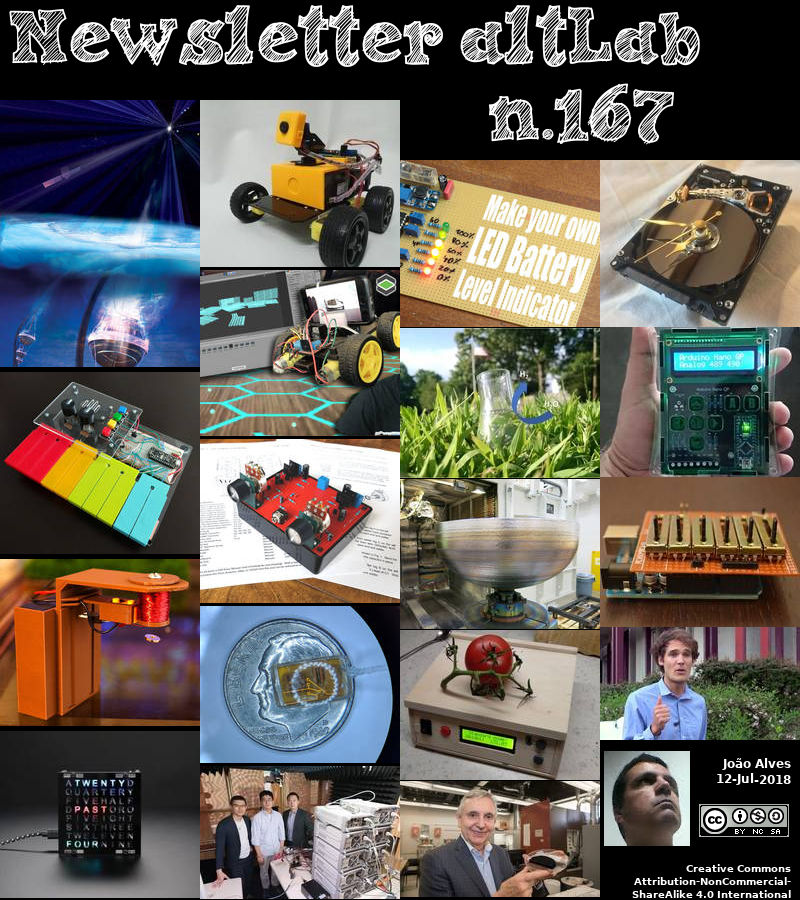
Editorial
Esta é a Newsletter Nº 167 que se apresenta com o mesmo formato que as anteriores. Se gostar da Newsletter partilhe-a!
Todas as Newsletters encontram-se indexadas no link.
Esta Newsletter tem os seguintes tópicos:
Faz hoje anos que nascia, em 1854, George Eastman. Este inventor e industrial norte-americano foi um fabricante pioneiro de materiais fotográficos, incluindo laminados (patenteado pela primeira vez a 14 de Outubro de 1884) e a câmara Kodak (patenteada a 4 de Setembro de 1888). Ele fundou a Eastman-Kodak Company, que durante anos manteve um monopólio virtual na indústria de câmaras e filmes. A introdução da primeira câmara Kodak (uma palavra cunhada, 1888, que se tornou uma marca registada) ajudou a promover a fotografia amadora em larga escala.
Faz igualmente hoje anos que nascia, em 1895, Buckminster Fuller. Este inventor, educador, autor, filósofo, engenheiro e arquitecto norte-americano que desenvolveu a cúpula geodésica. Esta grande cúpula pode ser colocada directamente no solo como uma estrutura completa. Não há limite para o tamanho para o qual ele pode ser construído e reter resistência estrutural suficiente. Fuller também inventou uma ampla gama de outras máquinas de mudança de paradigma e sistemas estruturais. Ele estava especialmente interessado em projectos de alta resistência ao peso, com um máximo de utilidade para o mínimo de material. Os seus projectos e filosofia de engenharia são parte da fundação da estética contemporânea de design de alta tecnologia. Ele detinha mais de 2000 patentes.
Faz também anos hoje que nascia, em 1913, Willis Lamb. Este físico norte-americano e vencedor em comum, com Polykarp Kusch, do Prémio Nobel de Física em 1955 "por suas descobertas sobre a estrutura fina do espectro de hidrogénio". O seu trabalho experimental estimulou refinamentos nas teorias quânticas dos fenómenos electromagnéticos.
Por fim, faz anos hoje que nascia, em 1928, Elias James Corey. Este químico orgânico norte-americano, vencedor do Prémio Nobel de Química em 1990 "pelo seu desenvolvimento da teoria e metodologia da síntese orgânica". Ele é conhecido principalmente pelo seu trabalho em análises assistidas por computador de problemas de síntese. Usando a "análise retro-sintética", uma molécula alvo pode ser dividida por etapas reversíveis em compostos mais simples e prontamente disponíveis, o que é muito auxiliado pelo uso de computadores. Corey sintetizou mais de 100 substâncias pela primeira vez, incluindo terpenos (hidrocarbonetos de óleo vegetal) e ginkolide B (um extracto da árvore ginko usado para controlar a asma).
Nesta semana que passou ficámos a saber que a Lockheed Martin criou uma cúpula de titânio impressa em 3-D para tanques de combustível de satélites. O veiculo de 1,16 metros de diâmetro completou as rodadas finais de testes de qualidade este mês, finalizando um programa de desenvolvimento de vários anos para criar tanques gigantes de alta pressão que transportam combustível a bordo de satélites.
Também esta semana, a OPENER, Inc., pioneira em veículos aéreos para viagens de consumidores, revelou hoje o BlackFly; a primeira aeronave ultra-leve de descolagem e aterragem vertical de asa fixa totalmente elétrica ultraleve (VTOL). O BlackFly é um Veículo Aéreo Pessoal (PAV) de assento único projectado e construído para um novo mundo de transporte tridimensional. BlackFly é simples de dominar e não requer licenciamento formal (nos EUA) ou habilidades especiais para operar com segurança. Embora o BlackFly tenha recursos anfíbios completos, ele é projectado principalmente para operar facilmente a partir de pequenas áreas relvadas e percorrer distâncias de até 40 quilómetros a uma velocidade de 100 km/h (restrição dos EUA).
Na Newsletter desta semana apresentamos diversos projetos de maker. É apresentada a revista newelectronics de 10 de Julho de 2018.
 João Alves ([email protected])
João Alves ([email protected])
O conteúdo da Newsletter encontra-se sob a licença  Creative Commons Attribution-NonCommercial-ShareAlike 4.0 International License.
Creative Commons Attribution-NonCommercial-ShareAlike 4.0 International License.
Novidades da Semana

Giant Satellite Fuel Tank Sets New Record For 3-d Printed Space Parts
"Lockheed Martin (NYSE: LMT) has embraced a 3-D printed titanium dome for satellite fuel tanks so big you can't even put your arms around it. The 46-inch- (1.16-meter-) diameter vessel completed final rounds of quality testing this month, ending a multi-year development program to create giant, high-pressure tanks that carry fuel on board satellites. The titanium tank consists of three parts welded together: two 3-D printed domes that serve as caps, plus a variable-length, traditionally-manufactured titanium cylinder that forms the body. "Our largest 3-D printed parts to date show we're committed to a future where we produce satellites twice as fast and at half the cost," said Rick Ambrose, Lockheed Martin Space executive vice president. "And we're pushing forward for even better results. For example, we shaved off 87 percent of the schedule to build the domes, reducing the total delivery timeline from two years to three months."" [...]

Opener Unveils First USA-Qualified Ultralight All-Electric Personal VTOL Aircraft
"OPENER, Inc., a pioneer of aero vehicles for consumer travel, today revealed BlackFly; the world’s first ultralight all-electric fixed-wing vertical take-off and landing (VTOL) aircraft. BlackFly is a single-seat Personal Aerial Vehicle (PAV) designed and built for a new world of three-dimensional transportation. BlackFly is simple to master and requires no formal licensing (in USA) or special skills to operate safely. Though BlackFly has full amphibious capabilities, it is primarily designed to easily operate from small grassy areas and travel distances of up to 25 miles at a speed of 62 mph (USA restriction). “OPENER is re-energizing the art of flight with a safe and affordable flying vehicle that can free its operators from the everyday restrictions of ground transportation,” said Marcus Leng, CEO. “We will offer competitive pricing in an endeavor to democratize three-dimensional personal transportation." [...]
Outras Notícias
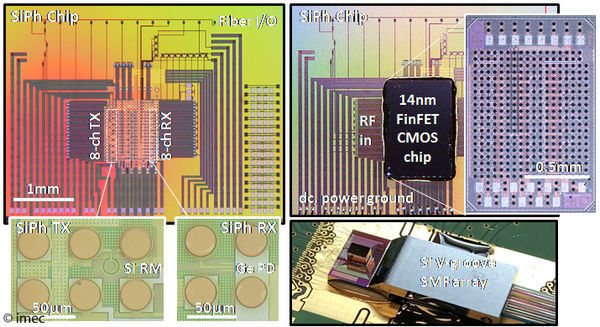
Imec Demonstrates Hybrid FinFET-Silicon Photonics Technology for Ultra-Low Power Optical I/O
"Today at its Imec Technology Forum USA in San Francisco, imec, the world-leading research and innovation hub in nano-electronics and digital technology, announced that it has demonstrated ultra-low power, high-bandwidth optical transceivers through hybrid integration of Silicon Photonics and FinFET CMOS technologies. With a dynamic power consumption of only 230fJ/bit and a footprint of just 0.025mm2, the 40Gb/s non-return-to-zero optical transceivers mark an important milestone in realizing ultra-dense, multi-Tb/s optical I/O solutions for next-generation high-performance computing applications. The exponentially growing demand for I/O bandwidth in datacenter switches and high-performance computing nodes is driving the need for tight co-integration of optical interconnects with advanced CMOS logic, covering a wide range of interconnect distances (1m-500m+). In the presented work, a differential FinFET driver was co-designed with a Silicon Photonics ring modulator, and achieved 40Gb/s NRZ optical modulation at 154fJ/bit dynamic power consumption. The receiver included a FinFET trans-impedance amplifier (TIA) optimized for operation with a Ge waveguide photodiode, enabling 40Gb/s NRZ photodetection with an estimated sensitivity of -10dBm at 75fJ/bit power consumption. High-quality data transmission and reception was also demonstrated in a loop-back experiment at 1330nm wavelength over standard single mode fiber (SMF) with 2dB link margin." [...]

Analog Devices to partner with Baidu on autonomous driving project
"U.S. chipmaker Analog Devices Inc said on Tuesday it had partnered with Baidu Inc to advance development of the Chinese search engine giant’s autonomous driving technologies. Analog Devices and Baidu will jointly develop sensing and navigation applications such as radar and lidar for Project Apollo. After years of internal development, Baidu last year decided to open its autonomous driving technology to third-parties to accelerate development and help it compete with U.S. firms Tesla and Google. Analog Devices said the collaboration will also focus on providing solutions aimed at “intelligent connectivity important for the future of smart traffic”. Earlier in the day, car maker BMW signed an agreement to join Baidu’s Apollo as a board member. " [...]

Kenya to use Alphabet's balloon project for rural internet
"Kenya is set to use Alphabet Inc’s system of balloons to help bring the Internet to some of the East Africa nation’s rural communities, according to a report by Reuters. Known as Project Loon, the technology was developed by Alphabet’s X, the company’s innovation lab. The project which began as a Google project in 2013 – launches balloons into the stratosphere that are designed to act like floating mobile phone towers. They operate high enough so that they don’t interfere with power lines, aeroplanes or wildlife, which of course is abundant in Kenya. Joe Mucheru, Kenya’s Information, Communication and Technology minister, told Reuters that Loon’s representatives were “holding talks” with local telecom operators on the deployment of Loon’s balloons. “The Loon team are still working out contracts,” Mucheru told the news service." [...]

CircuitPython 3.0.0 Released!
"3.0.0 is the latest major revision of CircuitPython and features new support for the SAMD51 (aka M4) and preliminary support for the nRF52 BLE chipset. It also features better memory utilization so more can be loaded in the same amount of space. General release We believe this release is stable and relatively bug free. So, please try this before trying 2.x. If you find issues please file an issue. Changes since Release Candidate 1 Update frozen crickit library." [...]

Reduce Driver Distraction with Automotive-Qualified 3D Gesture Recognition Controller
"Decrease automotive 3D HMI design costs with Microchip’s new gesture controller Car manufacturers are increasingly seeking ways to reduce driver distraction through implementing functional safety technology in vehicles. Many Human Machine Interface (HMI) designers are turning to gesture recognition as a solution to improve driver and vehicle safety without sacrificing interior design, adding features that allow drivers to easily control everything from switching on lights to answering phone calls while focusing on the road. Microchip Technology Inc. (NASDAQ: MCHP) today announced a new three-dimensional (3D) gesture recognition controller that offers the lowest system cost in the automotive industry, providing a durable single-chip solution for advanced automotive HMI designs. The MGC3140 joins Microchip’s family of easy-to-use 3D gesture controllers as the first qualified for automotive use. Suited for a range for applications that limit driver distraction and add convenience to vehicles, Microchip’s new capacitive technology-based air gesture controller is ideal for navigating infotainment systems, sun shade operation, interior lighting and other applications. The technology also supports the opening of foot-activated rear liftgates and any other features a manufacturer wishes to incorporate with a simple gesture action." [...]

New High- and Very-High-Performance STM32 Value Lines from STMicroelectronics Boost Real-Time IoT-Device Innovation
"The latest additions to the STM32* family, the STM32F7x0 and H7x0 Value Line microcontrollers (MCU) from STMicroelectronics, give extra flexibility to create affordable performance-oriented systems including real-time IoT devices, without compromising features or cyber protection. New High- and Very-High-Performance STM32 Value Lines from STMicroelectronics Boost Real-Time IoT-Device Innovation These new lines trim embedded Flash to the essential, still allowing secure boot, sensitive code and real-time routines to run safely on-chip, leveraging access times over 25 times faster than for external Flash (for cache miss). If needed, applications can scale-up either by adding off-chip serial or parallel (up to 32-bit) memories and leveraging the MCUs’ broad external interfaces and eXecute in Place (XiP) capability, or by porting to other pin-to-pin compatible STM32F7 or STM32H7 MCU lines, with up to 2Mbyte Flash and up to 1Mbyte RAM, supported by the same ecosystem with the same easy-to-use tools. The Value Lines retain powerful STM32F7 and H7 features, such as the state-of-the-art peripherals, hardware accelerators, and the real-time architecture with ultra-fast internal buses, short interrupt latency, and fast (~1ms) boot-up. The MCUs are also energy efficient, with flexible power modes, gated power domains, and on-chip power management that simplify design and reduce BOM cost. With execution performance up to 2020 CoreMark®[1] at the heart of a secure and power-efficient architecture, the new Value Line devices are the entry point to IoT innovation in medical, industrial, and consumer applications." [...]

Two New Spectre-Class CPU Flaws Discovered-Intel Pays $100K Bounty
"Intel has paid out a $100,000 bug bounty for new processor vulnerabilities that are related to Spectre variant one (CVE-2017-5753). The new Spectre-class variants are tracked as Spectre 1.1 (CVE-2018-3693) and Spectre 1.2, of which Spectre 1.1 described as a bounds-check bypass store attack has been considered as more dangerous. Earlier this year, Google Project Zero researchers disclosed details of Variants 1 and 2 (CVE-2017-5753 and CVE-2017-5715), known as Spectre, and Variant 3 (CVE-2017-5754), known as Meltdown. Spectre flaws take advantage of speculative execution, an optimization technique used by modern CPUs, to potentially expose sensitive data through a side channel by observing the system. Speculative execution is a core component of modern processors design that speculatively executes instructions based on assumptions that are considered likely to be true. If the assumptions come out to be valid, the execution continues, otherwise discarded." [...]

Innovation For The Benefit Of Social Housing
"In Nantes, a world first is taking shape: the construction of a house by robot 3D printer. This 95m2 house will include 5 rooms, rounded walls, windows and doors… a set of complex architectural forms, achieved by means of a revolutionary technology, on a site provided by Nantes Métropole Habitat. This innovative project is led by a consortium of scientists, manufacturers, and public and socio-economic actors. The aim: to quickly build affordable, adaptable, and energy efficient housing. AN ADVANCED TECHNOLOGY This innovative system makes it possible to build the walls of a house by 3D printing, on the construction site itself and in just a few days. The advanced technology consists of depositing 3 layers of materials using a polyarticulated industrial robot: two layers of expansive foam serve as formwork for a third layer of concrete." [...]

NASA's Fermi Traces Source of Cosmic Neutrino to Monster Black Hole
"For the first time ever, scientists using NASA’s Fermi Gamma-ray Space Telescope have found the source of a high-energy neutrino from outside our galaxy. This neutrino traveled 3.7 billion years at almost the speed of light before being detected on Earth. This is farther than any other neutrino whose origin scientists can identify. High-energy neutrinos are hard-to-catch particles that scientists think are created by the most powerful events in the cosmos, such as galaxy mergers and material falling onto supermassive black holes. They travel at speeds just shy of the speed of light and rarely interact with other matter, allowing them to travel unimpeded across distances of billions of light-years. Artist visual of a supermassive black hole in a distant galaxy The discovery of a high-energy neutrino on September 22, 2017, sent astronomers on a chase to locate its source—a supermassive black hole in a distant galaxy." [...]
Ciência e Tecnologia
Semiconductor quantum transistor opens the door for photon-based computing
"Transistors are tiny switches that form the bedrock of modern computing—billions of them route electrical signals around inside a smartphone, for instance. Quantum computers will need analogous hardware to manipulate quantum information. But the design constraints for this new technology are stringent, and today’s most advanced processors can’t be repurposed as quantum devices. That’s because quantum information carriers, dubbed qubits, have to follow different rules laid out by quantum physics. Scientists can use many kinds of quantum particles as qubits, even the photons that make up light. Photons have added appeal because they can swiftly shuttle information over long distances and they are compatible with fabricated chips." [...]
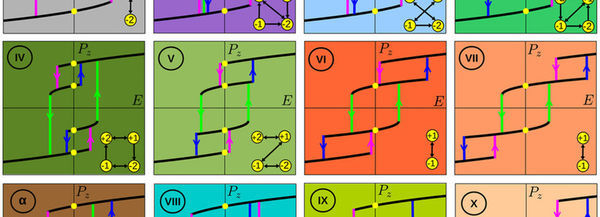
Newly Discovered Properties of Ferroelectric Crystal Shed Light on Emerging Branch of Materials
"Team of researchers maps out the ferroelectric, ferromagnetic and photoelectric properties of Ca3Mn2O7, potentially opening the door for applications of hybrid improper ferroelectrics. In ferroelectric materials the crystal structure distorts, giving rise to a spontaneously formed polarization and electric field. Because of this unique property, ferroelectrics can be found in anything from ultrasound machines and diesel fuel injectors to computer memory. Ferroelectric materials are behind some of the most advanced technology available today. Findings that ferroelectricity can be observed in materials that exhibit other spontaneous transitions, like ferromagnetism, have given rise to a new class of these materials, known as hybrid improper ferroelectrics. The properties of this type of material, however, are still far from being fully understood." [...]

Carbon is the new black
"UC’s Nanoworld Laboratories collaborates with the U.S. Air Force, the U.S. Army and NASA to investigate new uses for carbon nanotubes in military uniforms and fabric that can double as batteries. Engineers with the University of Cincinnati are leveraging a partnership with Wright-Patterson Air Force Base to create clothing that can charge your cell phone. Move over, Iron Man. What makes this possible are the unique properties of carbon nanotubes: a large surface area that is strong, conductive and heat-resistant. UC’s College of Engineering and Applied Science has a five-year agreement with the Air Force Research Laboratory to conduct research that can enhance military technology applications. UC professor Vesselin Shanov co-directs UC’s Nanoworld Laboratories with research partner and UC professor Mark Schulz." [...]
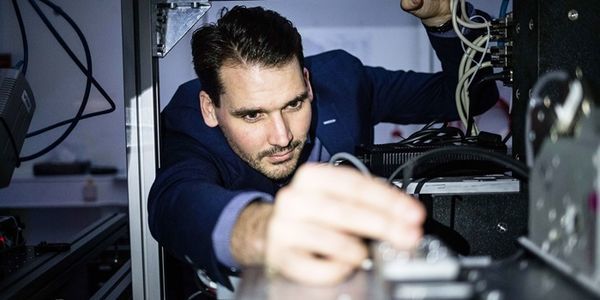
New X-ray microscope provides new knowledge about well-known material
"A Danish-developed X-ray microscope reveals novel dynamics in the material barium titanate, which is used in, e.g., phones, cars, and computers. Very few people have heard of barium titanate, BaTIO3, even though it is used in a wide variety of products from our everyday lives—cars, mobile phones, computers, ultrasound scanners, and for energy conversion. It is a so-called ferroelectric material, whose special properties are used in, for example, capacitors, which can store a large quantity of electrical energy. Ferroelectrics are therefore a popular choice of material in many contexts. The dynamics and the surface of barium titanate have already been described in detail, but until now the internal structure of the material has been unknown. A new so-called Dark Field X-ray microscope has now made it possible to explore this." [...]

Electrons slowing down at critical moments
"In a new study, researchers from the U.S. Department of Energy’s (DOE) Argonne National Laboratory have determined that electrons in some oxides can experience an “unconventional slowing down” of their response to a light pulse. The researchers describe the behavior as lasting about a millionth of a second, which is still a million times slower than traditional electronic recovery times. “We’ve discovered that electrons can be very slow to return to their homes after being kicked out from the ‘ordered states.’” — Haidan Wen, Argonne physicist and co-author “It’s as if the electron is spending two years or more dithering between states when normally it could make up its mind in a minute,” said Anand Bhattacharya, an Argonne materials scientist and co-author of the study, published May 4, in Nature Communications. In a crystal, all the atoms form a periodic structure called a lattice, where the atoms are arranged in a repetitive pattern in three dimensions. The properties of electrons living in this space typically obey the same periodicity. But below a temperature of about minus 100 degrees Fahrenheit, the electrons in the study material, lanthanum strontium ferrite, find it more energetically advantageous to cooperate with the lattice and magnetism on the iron atoms, to form a new periodic structure called a magnetically driven, charge-ordered state." [...]
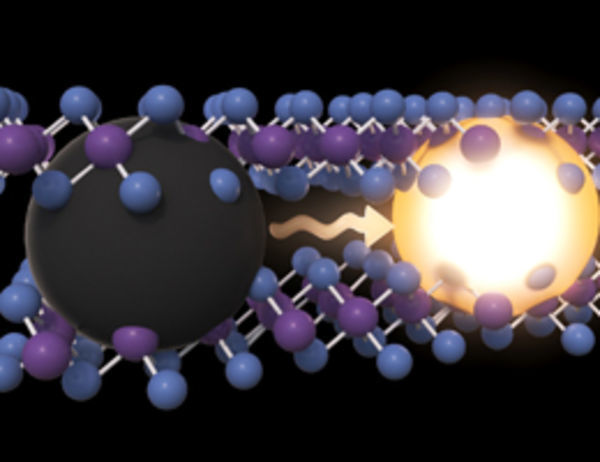
Lattice vibrations boost photoluminescence
"LMU physicists have characterized in detail the optical response of semiconducting tungsten diselenide bilayer crystals and explained their distinctive spectral signatures. Owing to their intriguing physical properties, ultrathin 2D materials have become a major focus of research in nanoscience. One of the most fascinating sub-group of these materials are the semiconducting transition metal dichalcogenides (TMDs), whose optical characteristics have the potential for novel technological applications. The mechanisms underlying their optical responses are, however, complex and puzzling. LMU physicists led by Professor Alexander Högele have now carried out a detailed investigation of atomically thin samples of the TMD tungsten diselenide (WSe2) with cryogenic optical spectroscopy. The results reveal the role of lattice vibrations in the photoluminescence of 2D WSe2 bilayers." [...]

Researcher pulling from past to shape future of glass research
"Glass has been a part of society for thousands of years, so it is easy for this material to become invisible and overlooked, but a Penn State materials scientist has laid out a plan to map the glass genome and advance the future of glass. The effort is part of the Materials Genome Initiative, which is trying to double the speed of developing new materials. John Mauro, professor of materials science and engineering at Penn State, is building a set of predictive modeling tools combining knowledge from glass physics and chemistry, to map the building blocks and properties of glass, much like efforts to understand the human genome. His team is already building a strong foundation for understanding glass composition, structure and property relationships in industrially relevant systems. He reports his results in a recent issue of Current Opinion in Solid State and Materials Science. "The idea of decoding the glass genome is that we embrace all of these different modeling approaches, from basic physics through empirical modeling and machine learning," Mauro said." [...]
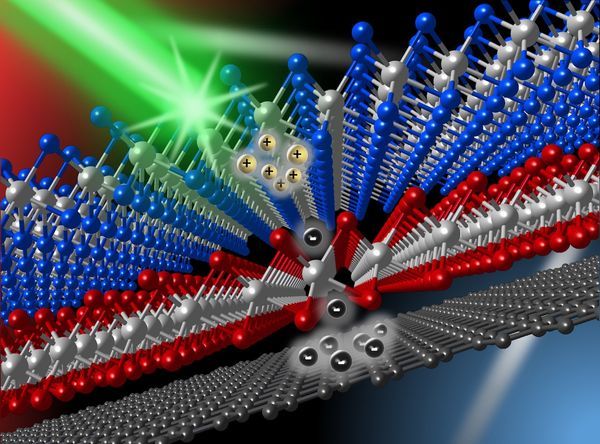
Researchers improve conductive property of graphene, advancing promise of solar technology
"In 2010, the Nobel Prize in Physics went to the discoverers of graphene. A single layer of carbon atoms, graphene possesses properties that are ideal for a host of applications. Among researchers, graphene has been the hottest material for a decade. In 2017 alone, more than 30,000 research papers on graphene were published worldwide. Now, two researchers from the University of Kansas, Professor Hui Zhao and graduate student Samuel Lane, both of the Department of Physics & Astronomy, have connected a graphene layer with two other atomic layers (molybdenum diselenide and tungsten disulfide) thereby extending the lifetime of excited electrons in graphene by several hundred times. The finding will be published on Nano Futures, a newly launched and highly selective journal." [...]
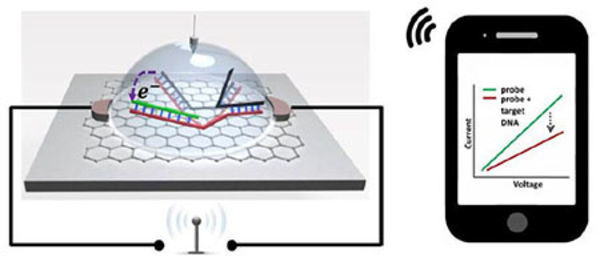
Biosensor Chip Detects Single Nucleotide Polymorphism Wirelessly and With Higher Sensitivity
"A team led by the University of California San Diego has developed a chip that can detect a type of genetic mutation known as a single nucleotide polymorphism (SNP) and wirelessly send the results in real time to a smartphone, computer, or other electronic device. The chip is at least 1,000 times more sensitive at detecting an SNP than current technology. The advance, published July 9 in Advanced Materials, could lead to cheaper, faster and portable biosensors for early detection of genetic markers for diseases such as cancer. An SNP is the change in a single nucleotide base (A, C, G or T) in the DNA sequence. It is the most common type of genetic mutation. While most SNPs have no discernible effect on health, some are associated with increased risk of developing pathological conditions such as cancer, diabetes, heart disease, neurodegenerative disorders, autoimmune and inflammatory diseases." [...]
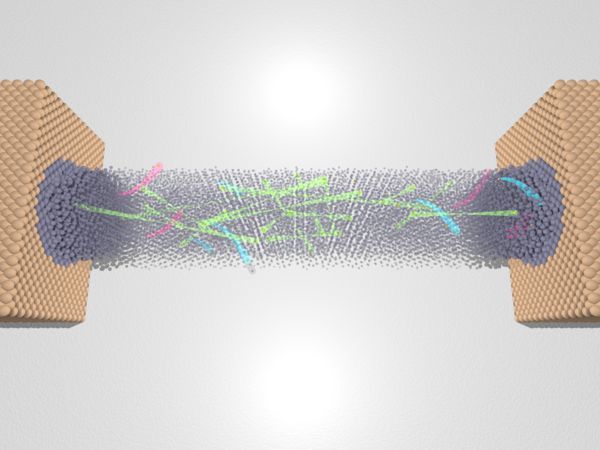
Physicists Uncover Why Nanomaterial Loses Superconductivity
"The struggle to keep drinks cold during the summer is a lesson in classical phase transitions. To study phase transitions, apply heat to a substance and watch how its properties change. Add heat to water and at the so-called “critical point,” watch as it transforms into a gas (steam). Remove heat from water and watch it turn into a solid (ice). Now, imagine that you’ve cooled everything down to very low temperatures — so low that all thermal effects vanish. Welcome to the quantum realm, where pressure and magnetic fields cause new phases to emerge in a phenomenon called quantum phase transitions (QPT)." [...]

A Step Closer to Single-Atom Data Storage
"Despite the rise of solid-state drives, magnetic storage devices such as conventional hard drives and magnetic tapes are still very common. But as our data-storage needs are increasing at a rate of almost 15 million gigabytes per day, scientists are turning to alternative storage devices. One of these are single-atom magnets: storage devices consisting of individual atoms stuck (“adsorbed”) on a surface, each atom able to store a single bit of data that can be written and read using quantum mechanics. And because atoms are tiny enough to be packed together densely, single-atom storage devices promise enormous data capacities. But although they are no longer science fiction, single-atom magnets are still in basic research, with many fundamental obstacles to be overcome before they can be implemented into commercial devices. EPFL has been at the forefront of the field, overcoming the issue of magnetic remanence, and showing that single-atom magnets can be used to read and write data." [...]

Switching Brain Circuits On and Off Without Surgery
"New noninvasive technique for precisely controlling brain circuits could one day help treat neurological conditions. In the maze of our brains, there are various pathways by which neural signals travel. These pathways can go awry in patients with neurological and psychiatric diseases and disorders, including epilepsy, Parkinson's, and obsessive-compulsive disorder. Researchers have developed new therapeutic strategies to more precisely target neural pathways involved in these conditions, but they often require surgery. The latest findings from the laboratory of Mikhail Shapiro, assistant professor of chemical engineering and an affiliated faculty member of the Tianqiao and Chrissy Chen Institute for Neuroscience at Caltech, are now showing how scientists and doctors might, in the future, selectively turn neural circuits on and off—without the need for surgery. The new study, featured in the July 9 online edition of Nature Biomedical Engineering, demonstrates how the method—which involves a trio of therapies: ultrasound waves, gene therapy, and synthetic drugs—can be used to specifically alter memory formation in mice." [...]
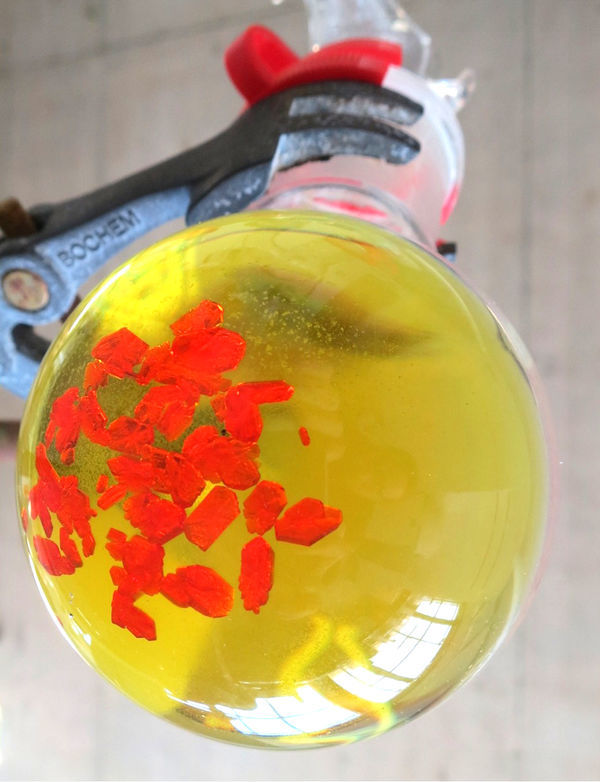
Scientists develop highly sensitive molecular optical pressure sensor
"Optical pressure measurements possible in solid state and in solution / Molecular ruby for use in materials sciences or catalysis Chemists at Johannes Gutenberg University Mainz (JGU) and at the Université de Montréal in Canada have developed a molecular system capable of very precise optical pressure measurements. The gemstone ruby served as the source of inspiration. However, the system developed by the team headed by Professor Katja Heinze at the JGU Institute of Inorganic Chemistry and Analytical Chemistry and Professor Christian Reber at the Université de Montréal is a water-soluble molecule, not an insoluble solid. Like the gemstone ruby, this molecule contains the element chromium that gives it its red color, which is why it has also been dubbed molecular ruby. This molecular ruby can be used to measure pressure both in the solid state as the gemstone ruby and furthermore in solution thanks to its solubility. Thus, this molecular system has potential applications in the fields of materials sciences, homogeneous and heterogeneous catalysis, and all conceivable fields where pressure changes need to be monitored." [...]

Opening up a pathway to cost-effective, autonomous IoT application
"Objects in our daily lives, such as speakers, refrigerators, and even cars, are becoming “smarter” day by day as they connect to the internet and exchange data, creating the Internet of Things (IoT), a network among the objects themselves. Toward an IoT-based society, a miniaturized thermoelectric generator is anticipated to charge these objects, especially for those that are portable and wearable. Due to advantages such as its relatively low thermal conductance but high electric conductance, silicon nanowires have emerged as a promising thermoelectric material. Silicon-based thermoelectric generators conventionally employed long, silicon nanowires of about 10-100 nanometers, which were suspended on a cavity to cutoff the bypass of the heat current and secure the temperature difference across the silicon nanowires. However, the cavity structure weakened the mechanical strength of the devices and increased the fabrication cost. To address these problems, a team of Japanese researchers from Waseda University, Osaka University, and Shizuoka University designed and successfully developed a novel silicon-nanowire thermoelectric generator, which experimentally demonstrated a high power density of 12 microwatts per 1cm2, enough to drive sensors or realize intermittent wireless communication, at a small thermal difference of only 5ºC." [...]

Salt is key ingredient for cheaper and more efficient batteries
"Researchers at the University of Nottingham Ningbo China (UNNC) have joined forces with a specialist group at the Shanghai Institute of Applied Physics (SINAP), Chinese Academy of Sciences on designs for the novel energy store which allows for greater power while also lasting longer than conventional batteries. Growing demand for electric vehicles and more sustainable forms of transport means finding new forms of energy storage such as batteries, super-capacitators and fuel cells. Currently a major challenge facing the industry is the poor performance quality of rechargeable batteries which often lose energy and power too quickly over time. The collaboration team is led by Professor Jiangiang Wang, an expert in molten salts chemistry at SINAP, and Professor George Chen, Li Dak Sum Chair Professor in Electrochemical Technologies at UNNC, and has worked to design a possible solution outlined in a paper published in the journal ChemSusChem. The paper, A Rechargeable High-Temperature Molten Salt Iron-Oxygen Battery, outlines research carried out using a novel and affordable rechargeable iron-oxygen battery containing a bi-phase electrolyte of molten carbonate and solid oxide. The first author of the paper, Dr Cheng Peng pointed out that the new design merges the merits of a solid-oxide fuel cell and molten metal-air battery, offering significantly improved battery reaction kinetics and power capability without compromising the energy capacity." [...]

Merging Antenna and Electronics Boosts Energy and Spectrum Efficiency
"Research could lead to longer talk time and higher data rates in 5G devices By integrating the design of antenna and electronics, researchers have boosted the energy and spectrum efficiency for a new class of millimeter wave transmitters, allowing improved modulation and reduced generation of waste heat. The result could be longer talk time and higher data rates in millimeter wave wireless communication devices for future 5G applications. The new co-design technique allows simultaneous optimization of the millimeter wave antennas and electronics. The hybrid devices use conventional materials and integrated circuit (IC) technology, meaning no changes would be required to manufacture and package them. The co-design scheme allows fabrication of multiple transmitters and receivers on the same IC chip or the same package, potentially enabling multiple-input-multiple-output (MIMO) systems as well as boosting data rates and link diversity. Researchers from the Georgia Institute of Technology presented their proof-of-concept antenna-based outphasing transmitter on June 11 at the 2018 Radio Frequency Integrated Circuits Symposium (RFIC) in Philadelphia." [...]

HKU Engineering and Medicine collaborate and develop a real-time ultraflexible sensor that makes inflammation testing and curing 30 times faster
"Different from the inorganic counterparts like silicon, organic semiconductors can operate under bending or stretching. Usually a thinner film can have stronger capability to bend. Other than bending, a thinner or smaller device can also offer a faster response time which is particular important for sensor application if immediate information is needed. These ultra-flexible sensors are very popular research areas and their applications cover electronic, smart sensing and etc. Recently, a University of Hong Kong (HKU) research team led by Dr Paddy Chan Kwok-leung of the Mechanical Engineering Department, in collaboration with Professor Gilberto Leung Ka-kit (Tsang Wing-Hing Professor in Clinical Neuroscience) and Dr Anderson Tsang Chun-on of Surgery, and Professor Xu Aimin of Department of Pharmacology and Pharmacy, have developed a C-reactive protein (CRP) sensor integrated onto a medical catheter for direct CRP sensing (Figure 1). This organic sensor has a total thickness less than one micrometer (~1/50 of Asian human hair), which can significantly save the time for sample and data collection, from currently a few hours to 10 minutes or less." [...]

Smart bandages designed to monitor and tailor treatment for chronic wounds
"Bandages with integrated pH and temperature sensors and electronically triggered drug release are designed to improve healing A team of engineers led by Tufts University has developed a prototype bandage designed to actively monitor the condition of chronic wounds and deliver appropriate drug treatments to improve the chances of healing. While the lab-tested bandages remain to be assessed in a clinical context, the research, published today in the journal Small, is aimed at transforming bandaging from a traditionally passive treatment into a more active paradigm to address a persistent and difficult medical challenge. Chronic skin wounds from burns, diabetes, and other medical conditions can overwhelm the regenerative capabilities of the skin and often lead to persistent infections and amputations. With the idea of providing an assist to the natural healing process, the researchers designed the bandages with heating elements and thermoresponsive drug carriers that can deliver tailored treatments in response to embedded pH and temperature sensors that track infection and inflammation. Non-healing chronic wounds are a significant medical problem – nearly 15 percent of Medicare beneficiaries require treatment for at least one type of chronic wound or infection at an annual cost of an estimated $28 billion, according to research published in Value in Health. Patients are often older, non-ambulatory, and limited in their ability to provide self-care, yet non-healing wounds are typically treated in an outpatient setting or at home." [...]
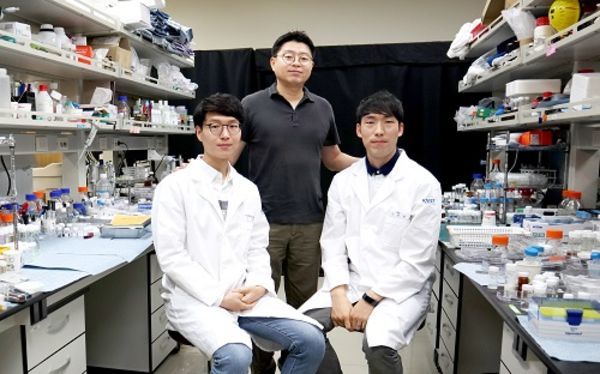
Photonic Capsules for Injectable Laser Resonators
"A KAIST research group presented photonic capsules for injectable laser resonators using microfluidic technology. The capsule’s diameter is comparable to a human hair and stable in gas and liquid media, so it is injectable into any target volume. The research group headed by Professor Shin-Hyun Kim in the Department of Chemical and Biomolecular Engineering applied an interesting optical property from nature. Professor Kim, who has dived deep into photonic materials research inspired from nature such as the Morpho butterfly, used a trait of beetles this time. Chrysina gloriosa, commonly known as the glorious beetle, shows a green color similar to leaves when illuminated by left-handed, circularly-polarized light while showing no color with right-handed, circularly-polarized light. This unique optical feature helps the beetles communicate with each other and protects them from predators." [...]
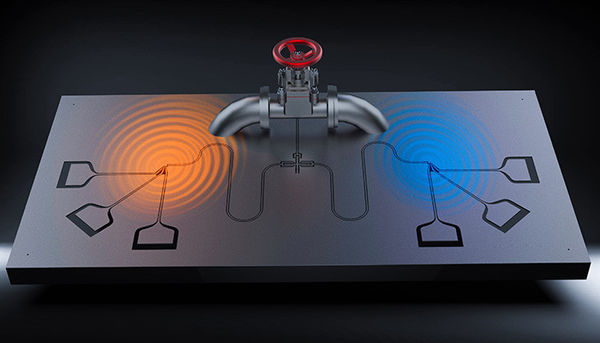
Qubits as valves: controlling quantum heat engines
"Researchers from Aalto University are designing nano-sized quantum heat engines to explore whether they may be able to outperform classical heat engines in terms of power and efficiency. In their paper, published in Nature Physics, the group led by Professor Jukka Pekola presents a way to solve a problem in how quantum systems interact and exchange energy with their macroscopic surroundings, and within themselves. The group strives to treat quantum information and thermodynamics on the same footing in their research. ‘We have realised a miniature heat valve in a quantum system composed of an artificial atom, a superconducting qubit—the basic building block of both quantum computing and quantum heat engines,’ explains Professor Pekola. While in quantum computers the qubit has to be decoupled from the noisy external world to sustain a fragile quantum state, in quantum heat engines, the system needs to be coupled to its dissipative surroundings, to heat baths. A particularly puzzling problem is the process of thermalisation when connecting external heat sources or ‘thermal baths’ to a coherent quantum system or qubit." [...]
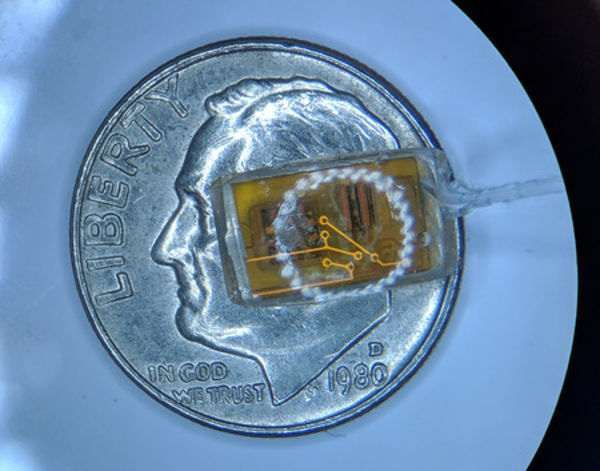
Wireless Pressure-Sensing Eye Implant Could Help Prevent Blindness
"Electrical and medical engineering researchers create device that makes it easier to measure pressure inside the eyes of people at risk for glaucoma. Researchers at Caltech have developed an implantable pressure sensor that can reside in the human eye for years at a time while wirelessly sending data about the eye's health to the patient or medical professionals. The implant could make it easier to prevent one of the leading causes of blindness. "By bringing together novel packaging and microelectronic technologies, and in close collaborations with ophthalmologists, we were able to design a miniaturized, fully wireless, and highly-sensitive sensor," says Azita Emami, Caltech's Andrew and Peggy Cherng Professor of Electrical Engineering and Medical Engineering and a Heritage Medical Research Institute Investigator, and paper co-author. The sensor is designed for monitoring the eyes of patients with glaucoma, a disease that causes gradual loss of vision, usually as a result of excessively high pressure inside the eye. Glaucoma is the second-most-common cause of blindness after cataracts, affecting 65 million people worldwide." [...]
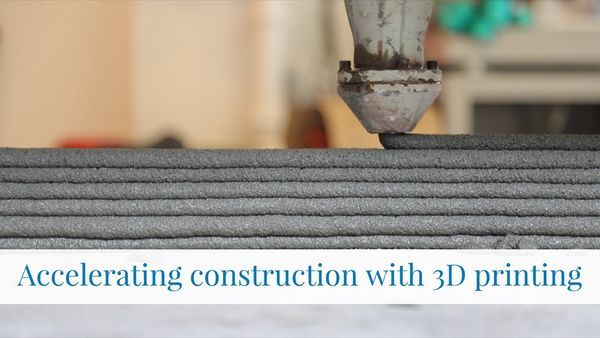
NUS builds new 3D printing capabilities, paving the way for construction innovations
"NUS Construction 3D Printing Programme aims to transform construction with novel building designs and materials The Centre for Additive Manufacturing (AM.NUS) at the National University of Singapore today announced the launch of the AM.NUS Construction 3D Printing Programme to accelerate the adoption of 3D printing building technology in the construction industry. The programme, hosted under the School of Design and Environment (SDE) at NUS and supported by the National Additive Manufacturing Innovation Cluster (NAMIC), will develop sustainable materials and 3D printing designs to facilitate rapid mass production of building structures. 3D printing technology has transformed manufacturing in a wide array of sectors such as the medical, precision engineering and aerospace industries, enabling these sectors to significantly speed up production and lower costs. It also holds immense potential in revolutionising the construction industry to bring about greater efficiency and cost savings, as well as improved building structures and eco-friendliness with better building designs and materials. If adopted widely, construction 3D printing can empower nations to meet growing demands for housing, sanitation facilities or even rebuild cities rapidly. The new AM.NUS Construction 3D Printing Programme will help to realise the value of 3D printing in the construction sector, and establish an ecosystem of construction 3D printing capabilities in Singapore through cutting-edge research and collaborations with the industry." [...]
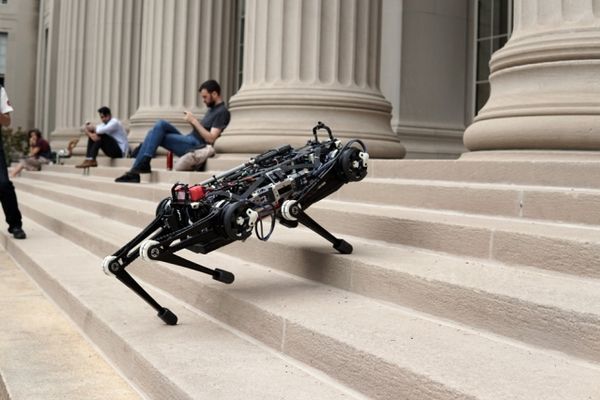
"Blind" Cheetah 3 robot can climb stairs littered with obstacles
"Improved design may be used for exploring disaster zones and other dangerous or inaccessible environments. MIT’s Cheetah 3 robot can now leap and gallop across rough terrain, climb a staircase littered with debris, and quickly recover its balance when suddenly yanked or shoved, all while essentially blind. The 90-pound mechanical beast — about the size of a full-grown Labrador — is intentionally designed to do all this without relying on cameras or any external environmental sensors. Instead, it nimbly “feels” its way through its surroundings in a way that engineers describe as “blind locomotion,” much like making one’s way across a pitch-black room. “There are many unexpected behaviors the robot should be able to handle without relying too much on vision,” says the robot’s designer, Sangbae Kim, associate professor of mechanical engineering at MIT. “Vision can be noisy, slightly inaccurate, and sometimes not available, and if you rely too much on vision, your robot has to be very accurate in position and eventually will be slow." [...]
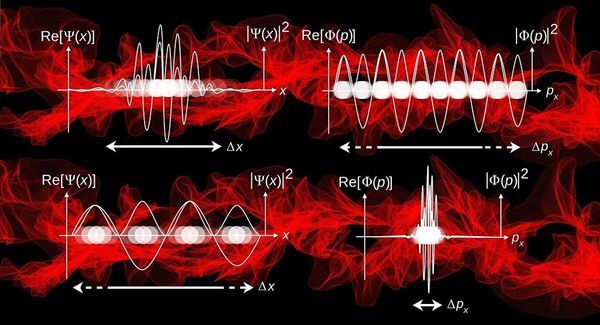
Chinese Physicists' Quantum Achievement Signals Dawn of Supercomputer
"Quantum achievement signals dawn of supercomputer Chinese physicists realized a genuine entanglement of 18 quantum particles, beating their own world record set in 2016, while the team has set their next goal at 50-qubit entanglement. The result of the study was published in the US journal Physical Review Letters on June 28. Chinese leading quantum physicist PAN Jianwei led the project. Together with his team, PAN earlier demonstrated quantum entanglement with 10 quantum bits, or "qubits," in 2016, according to a report sent by PAN's team to Global Times on Tuesday. Quantum entanglement is a weird phenomenon which Einstein called "spooky action at a distance" where quantum particles are connected "even if they are at opposite ends of the universe," an Australia-based Cosmos Magazine reported. The preparation and manipulation of multiple qubit in entangled states are "core indicators for the development of quantum computing," which could be used to process information exponentially faster than conventional computing, WANG Xilin, a member of PAN's team told Global Times on Tuesday." [...]
High Performance Nitride Semiconductor for Environmentally Friendly Photovoltaics
"A Tokyo Institute of Technology research team has shown copper nitride acts as an n-type semiconductor, with p-type conduction provided by fluorine doping, utilizing a unique nitriding technique applicable for mass production and a computational search for appropriate doping elements, as well as atomically resolved microscopy and electronic structure analysis using synchrotron radiation. These n-type and p-type copper nitride semiconductors could potentially replace the conventional toxic or rare materials in photovoltaic cells. Thin film photovoltaics have equivalent efficiency and can cut the cost of materials compared to market-dominating silicon solar panels. Utilizing the photovoltaic effect, thin layers of specific p-type and n-type materials are sandwiched together to produce electricity from sunlight. The technology promises a brighter future for solar energy, allowing low-cost and scalable manufacturing routes compared to crystalline silicon technology, even though toxic and rare materials are used in commercialized thin film solar cells. A Tokyo Institute of Technology team has challenged to find a new candidate material for producing cleaner, cheaper thin film photovoltaics." [...]
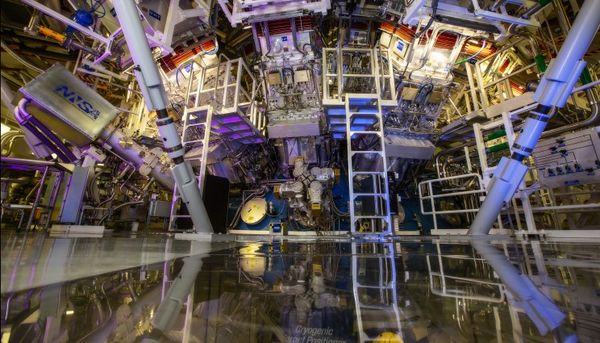
NIF sets new laser energy record
"Lawrence Livermore National Laboratory’s (LLNL) National Ignition Facility (NIF) laser system has set a new record, firing 2.15 megajoules (MJ) of energy to its target chamber -- a 15 percent improvement over NIF’s design specification of 1.8 MJ, and more than 10 percent higher than the previous 1.9 MJ energy record set in March 2012. This demonstration shot successfully meets a National Nuclear Security Administration (NNSA) Level 2 milestone for 2018. NIF, the world’s largest and most energetic laser, is funded by NNSA to serve as a critical research facility supporting the U.S science-based Stockpile Stewardship Program (SSP). “NIF’s users are always asking to use more energy in their experiments, because higher energies enhance the science NIF can deliver in support of the stewardship program. These results mark a major step toward increasing NIF’s energy and power capability,” said NIF Director Mark Herrmann. “This demonstration serves as the first step on a path that could allow NIF to operate at substantially higher energies than ever envisioned during NIF’s design.” The purpose of this experiment was to demonstrate the highest energy NIF can safely deliver with its current optics and laser configuration." [...]
New Semiconducting Crystal Rivals Diamond for Heat Conductivity
"The need for faster and smaller electronics has resulted in microelectronic components that produce progressively more heat. Thus, heat dissipation is an important issue, and one solution for cooling is to develop novel semiconducting materials with high thermal conductivity. Engineers and scientists have long known that diamond is the best material for conducting heat, but it has its drawbacks — the most obvious being that it is quite costly. It is also an electrical insulator. In addition, when paired with a semiconductor device, diamond expands at a different rate than the device does when it is heated. Now, a group of engineers from the Cockrell School of Engineering at The University of Texas at Austin, along with research partners across Texas and the U.S., has found a crystal material from two relatively common elements — boron and arsenic — that demonstrates far higher thermal conductivity than any other semiconductors and metals currently in use, such as silicon, silicon carbide, copper and silver." [...]

Artificial intelligence helps design an ultra-aerodynamic bike
"The current record for a bicycle travelling across flat road is 133.78 km/h, set in 2012 by a Dutch team at the World Human Powered Speed Challenge, which takes place every year in the Nevada desert. But this September, a team from IUT Annecy aims to beat that record. The team used artificial-intelligence-based software developed by Neural Concept, an EPFL startup, to boost the performance of its bike. In just a few minutes, Neural Concept’s technology can calculate the optimal shape of a bike to make it as aerodynamic as possible. It can also be used for aerodynamics calculations in a number of other applications. The company is presenting its software in Stockholm today at the International Conference on Machine Learning." [...]
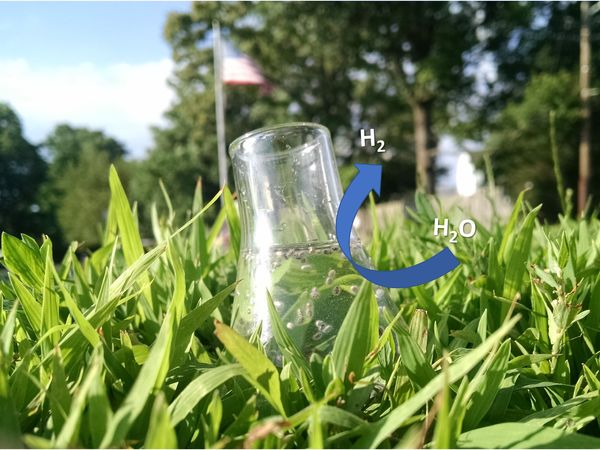
How Gold Nanoparticles Could Improve Solar Energy Storage
"Rutgers study opens door to broader use of sunlight and advanced materials to combat climate change Star-shaped gold nanoparticles, coated with a semiconductor, can produce hydrogen from water over four times more efficiently than other methods – opening the door to improved storage of solar energy and other advances that could boost renewable energy use and combat climate change, according to Rutgers University–New Brunswick researchers. “Instead of using ultraviolet light, which is the standard practice, we leveraged the energy of visible and infrared light to excite electrons in gold nanoparticles,” said Laura Fabris, associate professor in the Department of Materials Science and Engineering in the School of Engineering who led the work with Fuat Celik, assistant professor in the Department of Chemical and Biochemical Engineering. “Excited electrons in the metal can be transferred more efficiently into the semiconductor, which catalyzes the reaction.” The researchers, whose study was published online today in the journal Chem, focused on photocatalysis, which typically means harnessing sunlight to make faster or cheaper reactions. Titanium dioxide illuminated by ultraviolet light is often is used as a catalyst, but using ultraviolet light is inefficient. In the study, Rutgers researchers tapped visible and infrared light that allowed gold nanoparticles to absorb it more quickly and then transfer some of the electrons generated as a result of the light absorption to nearby materials like titanium dioxide. The engineers coated gold nanoparticles with titanium dioxide and exposed the material to UV, visible, and infrared light and studied how electrons jump from gold to the material." [...]

Bubbles and Whispers - Glass Bubbles Boost Nanoparticle Detection
"Technology created by researchers at the Okinawa Institute of Science and Technology Graduate University (OIST) is literally shedding light on some of the smallest particles to detect their presence – and it’s made from tiny glass bubbles. The technology has its roots in a peculiar physical phenomenon known as the “whispering gallery,” described by physicist Lord Rayleigh (John William Strutt) in 1878 and named after an acoustic effect inside the dome of St Paul’s Cathedral in London. Whispers made at one side of the circular gallery could be heard clearly at the opposite side. It happens because sound waves travel along the walls of the dome to the other side, and this effect can be replicated by light in a tiny glass sphere just a hair’s breadth wide called a Whispering Gallery Resonator (WGR). When light is shined into the sphere, it bounces around and around the inner surface, creating an optical carousel. Photons bouncing along the interior of the tiny sphere can end up travelling for long distances, sometimes as far as 100 meters." [...]
Documentação
A documentação é parte essencial do processo de aprendizagem e a Internet além de artigos interessantes de explorar também tem alguma documentação em formato PDF interessante de ler. Todos os links aqui apresentados são para conteúdo disponibilizado livremente pelo editor do livro.
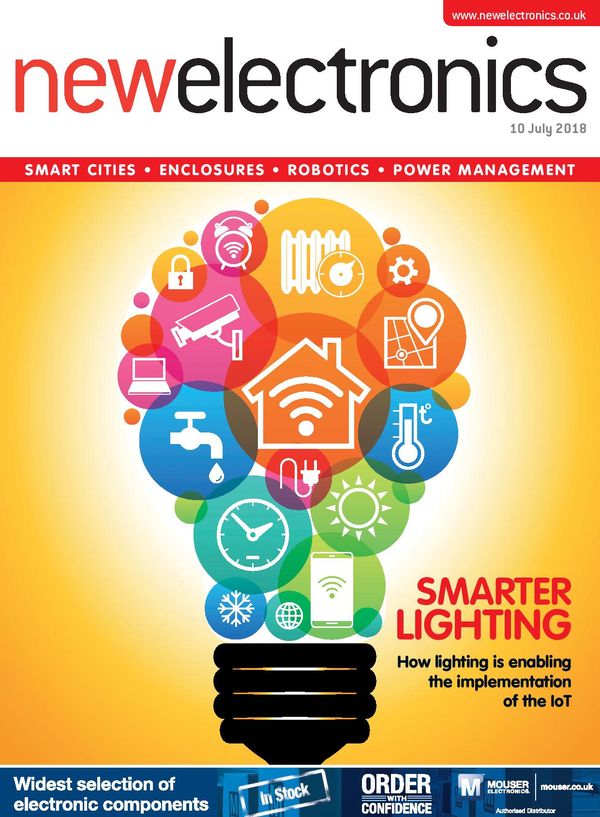
newelectronics 10 Julho 2018
"New Electronics is a fortnightly magazine focusing on technological innovation, news and the latest developments in the electronics sector. Downloadable as a digital page turner or pdf file, or offered as a hard copy, the New Electronics magazine is available in a format to suit you. " [...]
Projetos Maker
Diversos Projetos interessantes.
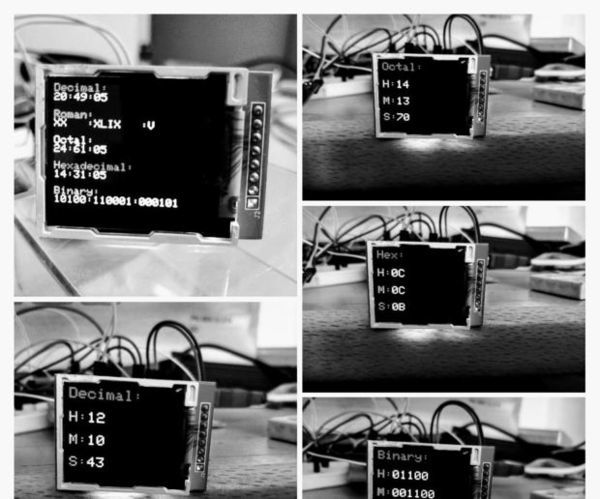
Multimodal Clock
"I love clocks! I was looking for an instructable for a clock displaying roman numerals on screen. When i did not get any suitable ones on arduino base, i decided to build one myself. Coupled with a color TFT display, I was wondering what else can be displayed and viola! thoughts of various number systems studied in my bachelor of engineering college days (more than 2 decades back!) came rushing in:Binary, Digital, Octal & Hexadecimal etc etc This though got me started and after much planning & coding, here is the implementation t!" [...]

DIY soldering iron- Arduino based
"What’s up my friends, welcome back. Since I’ve reviewed the TS100 soldering iron, I’ve been working on my own portable soldering iron. So, I’ve made some tests, some research, create the PCB and finally made this project. We need a heating element to heat the iron of course. But we also need a thermocouple to read the real temperature value and then create the PID control. But using the thermocouple is not that easy, so we also need a thermocouple amplifier IC." [...]
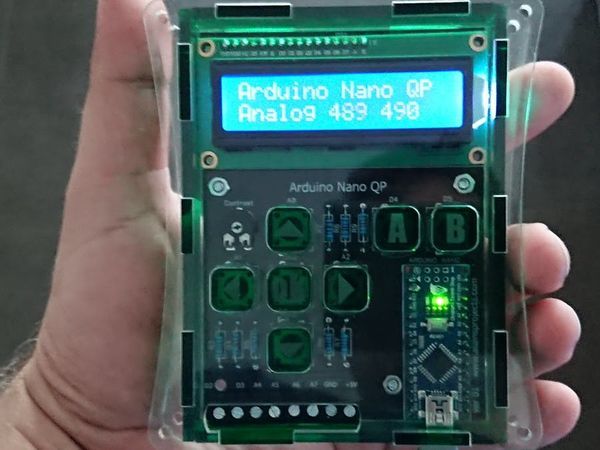
Arduino Nano QP
"The Arduino Nano Quick Project: Develop everywhere! Description The Arduino Nano Quick Project. It's a small board, based on an Arduino Nano. It has buttons, a display and I/O ports on it so that it's ready for most of your small projects. Details Do you also have the occasional problem, that you want to create something with an Arduino, but the workshop is a mess, you find neither a suitable display nor the right button, and finally, if you have everything together, you lost the desire, to realize the idea. That's why I have developed the Arduino Nano Quick Project." [...]

Rolling Robot With ESP32 Thing and TB6612FNG Driver, Controlled by Android Over BLE
"Hello everyone This is my first instructable. A rolling robot (nicknamed Raidho - from the rune that is associated with motion) based on ESP32 Thing, TB6612 FNG and BLE. One part that may seem peculiar is that the photos are not from the making procedure but from afterwards. The reason is that I decided to write this instructable after I had completed Raidho. I will try to compensate for it by making the description as detailed as possible. I re-used some things, I give the credits with respective links." [...]
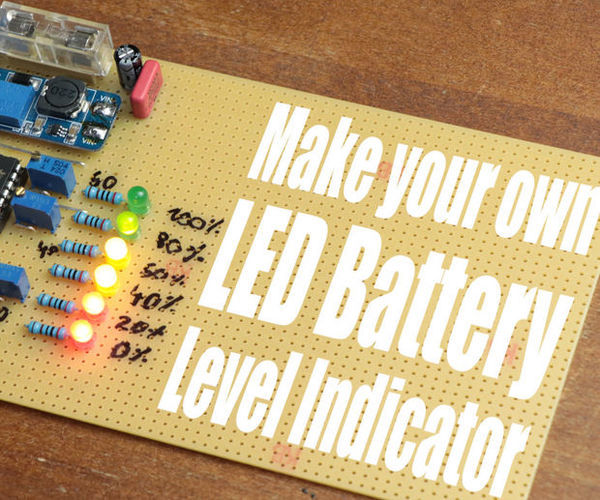
Make Your Own LED Battery Level Indicator
"In this project I will show you how we can use the classic LM3914 IC to create an LED Battery Level Indicator. Along the way I will show you how the IC works and explain why it is not the most precise circuit for a Li-Ion battery pack. And at the end I will show you how I created my own, more precise Battery Level Indicator circuit with a couple of simple components. Let's get started! " [...]
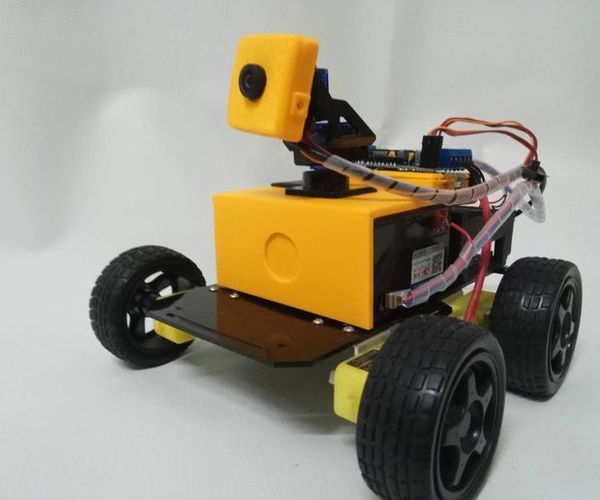
Banana/Raspberry Pi + Arduino Rover With Webcam
"A project I have done in my spare time. It is a full-drive 4 wheel robot controlled through a web interface. If you have any comments or questions please feel free to contact me. This project itself uses 3D printed parts and certain pieces of code that were created by other people. You can find credits and have a look at the original pieces at the end of Instructuble. Shall we begin?" [...]

NeoMatrix 8x8 Word Clock
"Are you fascinated with the passage of time? Do you want a stylish, modern and functional timepiece to add to your clock collection? The word clock is a one-of-a-kind time telling device, using a grid of letters to spell out the time. While you could spend thousands of dollars on other versions of this idea, this project is an inexpensive and quick way to build one for yourself. The word clock uses the Adafruit NeoPixel NeoMatrix 8x8 to create a colorful word clock! As such, it features an original 8x8 layout of letters in order to form all of the different time phrases." [...]

Digital Wallet Arduino Based
"How many password do you have? How many social profile or cloud tools do you have? How many computer do you use in your week? Many of this computers are yours? Only you have access to this machines? No?" [...]
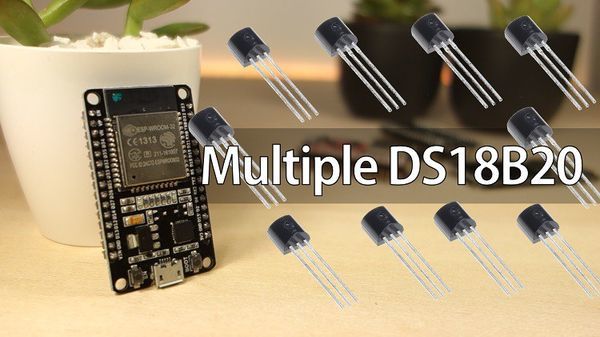
ESP32 with Multiple DS18B20 Temperature Sensors
"This guide shows how to read temperature from multiple DS18B20 temperature sensors with the ESP32 using Arduino IDE. We’ll show you how to wire the sensors on the same data bus to the ESP32, install the needed libraries, and a sketch example you can use in your own projects. This tutorial is also compatible with the ESP8266 and the Arduino boards. Introducing the DS18B20 Temperature Sensor The DS18B20 temperature sensor is a 1-wire digital temperature sensor. Each sensor has a unique 64-bit serial number, which means you can use many sensors on the same data bus (this means many sensors connected to the same GPIO). This is specially useful for data logging and temperature control projects." [...]
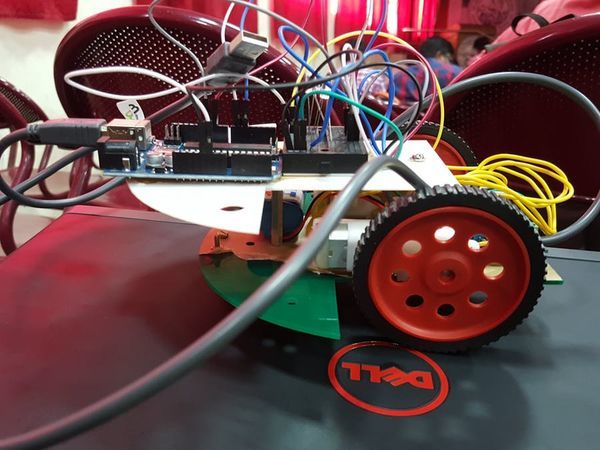
Voice Controlled Rover
"A rover that runs on wheels using Arduino controlled remotely through our voice command alone! (With the use of Bitvoicer). Story Hello Friends, By this project we have managed to control a rover or car using our voice command alone using bitvoicer (a third party propriety software). Contents: Setup the Rover. Install and configure software required. Compile and execute the code." [...]
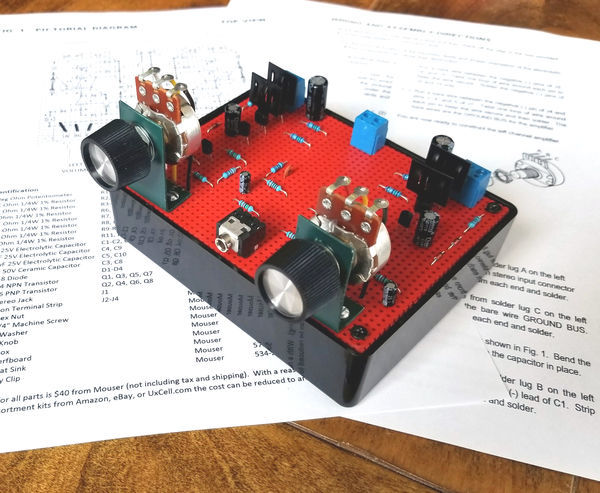
Build this 8 Transistor Stereo Amplifier
"Introduction While doing some research on the transition to solid state devices I encountered a really interesting article on the worlds first Transistorized Hi-Fi System. This article provides a nice back-stage view on how electronic design is carried out. Often, success depends on convincing your boss that a certain idea or process is worthwhile. Transistors in the 50s were hard to manufacture, noisy and unreliable, and when they worked it was only at low frequency and very low power. Many engineers were struggling to figure out what the transistor was good for outside of miniature hearing aids or signal conditioning in diode logic circuits. Sure the vacuum tube was large and inefficient, but it could do just about anything that needed doing at the time." [...]
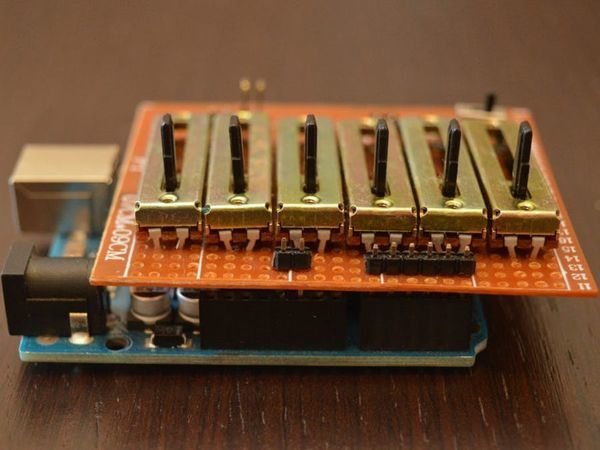
Step Sequencer
"Step Sequencer is a small expansion board for Arduino Uno that realizes a six-stage step sequencer producing 8-bit tone sequences. The Step Sequencer shield is the first project made by Artis Lab in the spring 2016. The board is an expansion for Arduino Uno that realizes a six-stage step sequencer producing 8-bit tone sequences. " [...]
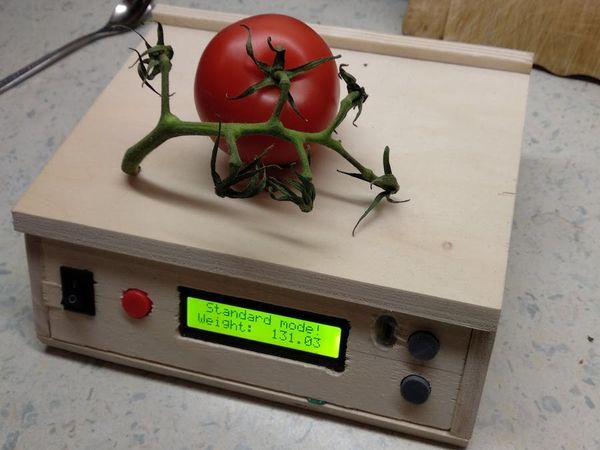
High Precision Scale with Arduino
"This is a very precise scale for any weight up to 1.5 kg! This is one of my very first Arduino projects. This is a high precision scale based on the HX711 module. It has different operating modes. It can measure weight in the normal mode. Also features a mode where you can place a coin, the program calculates its weight and then you place as many coins as you want all together or one by one and the scale calculates the amount of money and how many coins were placed." [...]

Pentasynth: A homebuilt pentatonic keyboard and synth
"I’ve been working on another music project: it’s a custom-built Arduino-based synthesizer and keyboard called “Pentasynth”. Pentasynth uses a keyboard based on a five note pentatonic scale, so it’s easy to play for people with limited background in music (such as young kids) and encourages experimentation and improvisation. Pentasynth creates a user-selectable accompaniment including different drum patterns, bass lines and chord progressions and allows the user to play a pentatonic melody line over the top. Under the hood, the audio generation is performed using a four channel, 10kHz playback of wavetables (sine, pulse, sawtooth, triangle and random noise) using a micro-controller generated PWM that is then passed through a low-pass filter and into a small amplifier and speaker. The microcontroller is programmed in Arduino, with code based on “The Synth”, a wavetable synth library by DZL/Illustron. Pentasynth has controls for volume, tempo and selection of different accompaniment patterns." [...]
Dual Axis Solar Tracker Panel with Auto and Manual Mode
"A solar panel that can rotate in two axis either automatically using four light sensors, either manually with the aid of two potentiometers. his is a project my students implemented during the 2017-2018 evening club Young Hackers. It is a demanding project for elementary school students and it took us many meetings to accomplish. It contains a small 5V solar panel that can rotate in two axis so as to harvest maximum power from the sun. The project is based on the Dual Axis Solar Tracker Project from OpenSourceClassroom. We wanted to implement two modes in the final product." [...]

Hard Drive Clock
"This all came about one day when I was taking apart some old computer components which were no longer useful; and not wanting to waste anything, I struck upon this idea of using the old hard drive to make a clock! This was also perfect timing, as I needed a new one, and had already bought some clock modules ready. This is not the hardest of Instructables to make, but it is one that requires patience and precision - NO CUTTING CORNERS! It should only take a few hours to complete at the most (if you use similar tools to me). " [...]

Arduino - NRF24L01 - TFT - Parts Counting Unit.
"In this project, we will learn how to make a counting parts unit can be used in industry for counting parts or anything else you want to used for. For this propose we will make two units : transmitter and receiver units. In the transmitter units we will use the IR sensor for counting the parts, after we attend the number we need to switch on the lamp using a relay module and send information to receiver unit (administration) using two NRF24L01 modules and we get alarme by message on TFT module and by singing a very famous theme : Game of Thrones. So let's go on to the work. " [...]

ELECTRONooBINO - Make your own Arduino UNO
"This is my electronubino, version 1. O. In this tutorial I will show you how I’ve made my own board as the Arduino Uno but with some unique addons that I wanted. My board has double row of pins, SPI port compatible with this NRF24 modules because I use those a lot, mini B USB port, white LEDs and some unique logos. So, let’s get started. INTRO - About Arduino If you’ve been on this website for a while, I bet you know what the Arduino microcontroller is." [...]
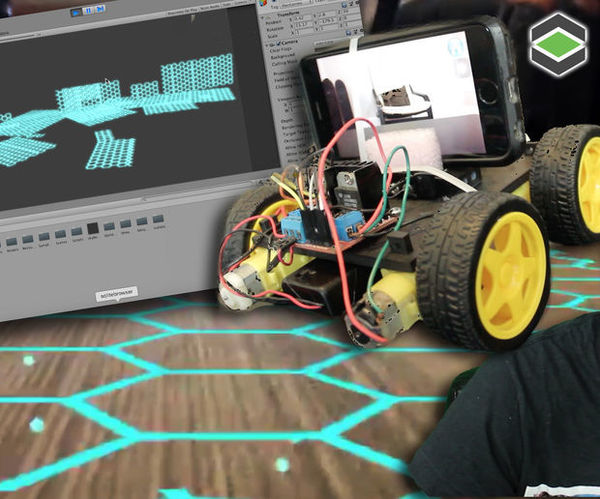
ROOM MAPPING Arduino Robot With Unity 3D
"This project uses an Arduino robot running a ESP-8266 Node MCU that communicates (and drives around) with a mobile phone. The phone is running an app made in the video game engine Unity 3D that does 3 things: 1.) The first scene allows you to drive around the robot with a camera feed going back to your computer. You can use the arrow keys to drive it around in any direction and the video feed allows you to keep driving even when the robot is out of sight. 2.) The second scene allows the robot to track anything you put in front of it." [...]

3D Printed Magnetic Levitation!
"I'm thrilled to unveil my new 3D printed Levitation device! How crazy is that? It's possible and actually not too difficult to make. I really had a lot of fun with this project and I am so happy with how it turned out. I hope you enjoy it! Stay tuned for more fun and random projects!" [...]
That's all Folks!


